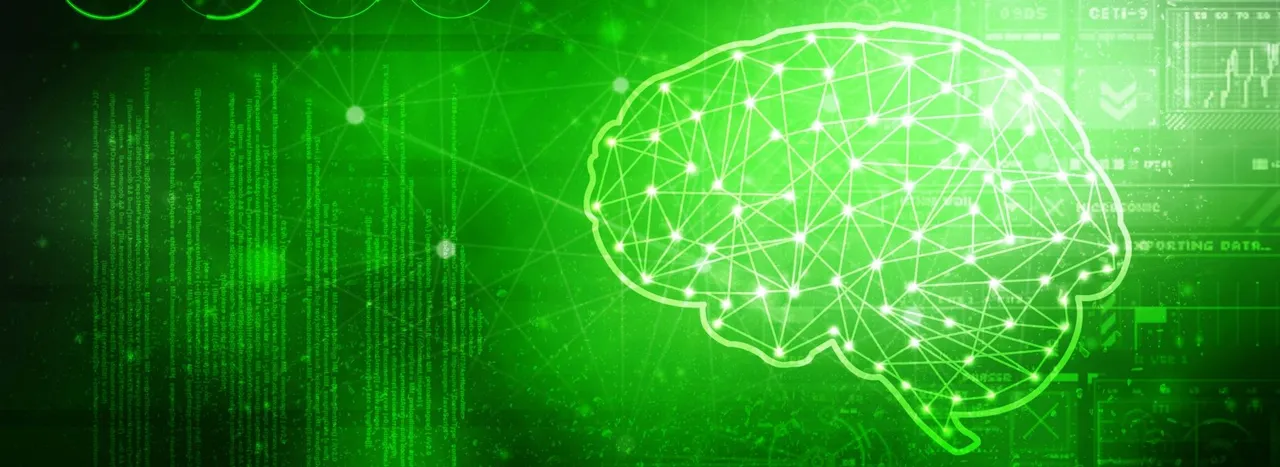AI Hype vs. Reality
While the entertainment industry has certainly played its part in influencing the public mindset when it comes to technology, thought leaders and tech industry heavyweights are increasingly weighing in and putting their money where their mouths are by investing in the latest and greatest technological advances. This is especially true when it comes to AI.
As one of the hottest talking points on the internet, AI is a subject that everyone seems to have an opinion on. However, few people get their information about AI from scholarly resources or those who actually use AI in the course of their work or research. As a result, there's a lot of hype, and even misinformation, surrounding this technology. To gain a better understanding of what AI really is (and what it isn't) we need to break down some of the most common myths about this 21st-century tool.
What is AI?
When people hear the term "AI" they tend to picture sentient robots, like those seen in many sci-fi movies. However, AI, or artificial intelligence, actually encompasses a wide breadth of subfields including machine learning, deep learning, robotics, and automation. In broad terms, AI refers to any agent that is capable of making autonomous decisions in a given situation or scenario. The artificial aspect of AI refers to the fact that each AI must be trained or taught about an environment or interactive protocol before it can learn to "think" or act on its own.
Within the field of AI, there are varying degrees of autonomy or decision-based capabilities. In fact, very few organizations actually use true AI as defined above, in large part, due to the time-intensive requirement of properly training an agent/algorithm. In most cases, what businesses employees and researchers use is some variation of the above. However, there are some companies that are leading the way in AI applications, the most popular of which are Siri, Alexa, and IBM Watson. They may not look like the robots from your favorite movies, but they can still perform impressive feats including answer questions, playing chess, and managing smart home devices.
AI Will Soon Replace Humans in the Workforce
Of all the hype surrounding AI, the threat of it replacing humans in the workforce is by far one of the most enduring. Media outlets love to run stories about AI threatening the livelihood of American citizens, and while their motivation is clear, that of the minority of tech leaders who add fuel to this fire of misinformation is not.
While there's little question, at least among AI experts and those who have first-hand working knowledge of artificial intelligence, that the prospect of a robotic invasion has been greatly exaggerated, there is some grain of truth to the idea. Low skilled jobs and those that involve repetitive or predictive tasks are most likely to be replaced by automation or AI. A study by McKinsey determined that nearly 79% of (predictive) manual work and 69% of data processing could strongly benefit from AI-based automation processes. Jobs in agriculture, construction, the accommodation and food services, and the manufacturing sector were most likely to fall into this category.

Technical potential for automation in the U.S.
It's important to note that the more higher-order thinking that a job requires the less likely it is for it to be replaced by AI, which is ironic given that AI is often touted as the pinnacle of intelligence. Managerial professions, jobs that require specialized training and creative endeavors like art or music are therefore least likely to be replaced by the technology.
However, automation excels at very specific tasks, mainly those that involve large amounts of data, numbers and or predictive inputs. Such responsibilities, more often than not, take time away from more thought-intensive and high-value tasks. In short, AI is most likely to supplement rather than replace humans when it comes to many of the most tedious and time-intensive tasks, saving employees and companies alike time, money and energy. In addition, Gartner predicts that AI will have created more than 2.3 million jobs by 2020.
AI is the Solution to Everything
Like with many new and misunderstood technologies, opinions about AI seem to range from one extreme to the other. If it's not destined to extinguish humanity, it's going to save us from, well, everything. While AI and its subsets are indeed powerful tools capable of shaping and even redefining a wide range of industries as well as the way that we live our lives, they are not the ultimate solution to humanity's problems. That being said, AI is already fundamentally changing the way that companies interact with consumers and is poised to do a lot more in the near future.
Emotion AI, which is an emerging but fast-growing field, is applying AI to detect human reactions to everything from webpage color schemes to video ads. This gives advertisers the power to create more tailored content and marketing, resulting in a truly unique user experience and one more likely to result in meaningful engagement with a product or service. According to a study by Capgemini, 58% of enterprises are actively implementing some form of AI to improve how they interact with their customers.
AI is also being applied to customer service in the form of chatbots. Trained on actual human customer service interactions and a branch of AI known as natural language processing, which breaks down human speech into keywords that convey overall content and meaning, chatbots are capable of providing customer service interactions that are nearly indistinguishable from that provided by actual humans. Well-known companies like Lyft, Whole Foods, Sephora, and Spotify have already integrated AI-enabled chatbots into their customer experience models, with great success.
Of course, ecommerce isn't the only industry to benefit from AI. The medical industry is using it to improve medical diagnostics, including cancer detection. Likewise, the construction sector, which hasn't experienced any significant changes in decades, is increasingly looking to AI-powered drones to provide faster and more accurate land surveying, transfers of materials and more engaging visuals for potential investors. Researchers are even using AI to help solve the world's increasingly imminent worldwide food shortage, as AI algorithms can be combined with key agricultural data points to identify more intelligent and efficient crop yields. So in some respects, AI could actually save humanity in a way that few might have anticipated.

AI: helping farmers feed 10 billion people
AI is Just a Fad
AI is often talked about as if it's a new concept, however, the first artificial intelligence programs were written as early as the 1950s, with Norbert Wiener widely credited as branching the link between human intelligence and machines and John McCarthy being the first to coin the term "AI". Fast-forward sixty years later and a once relatively obscure concept is now one of the most widely searched and talked about terms of the 21st century.
Corporate investment in AI technology startups totals nearly $10 billion dollars. Google alone has already invested at least $3.6 billion in AI. But it's not just industry leaders who are sitting up and taking notice of this powerful technology. Many businesses, big and small, are eager to implement AI in their organizations in the hopes that they too will be able to realize the high-value returns and increased customer engagement that their larger competitors enjoy. A 2017 study by Vanson Bourne found that 80% of enterprises are currently utilizing some form of AI, with 30% planning to increase investment in the technology within the next 36 months.
While AI may be popular in the US, it's even more prevalent in other countries, with the highest number of AI-based technology users concentrated in China, Vietnam, and Indonesia. It's clear that the demand for smarter technology isn't limited to just the US or even the West. Much more than a fad, the desire for AI is part of a wider shift in consumer demand and sentiment, led by the most educated and tech-savvy generation in history.
Conclusion
Not long ago, many people also dismissed the internet as little more than a fad. Today, it is an integral part of our lives, touching everything from communication to shopping and even banking. It may be ten or even twenty years from now, but one day, AI too will become as commonplace in our lives as searching the web. When that day comes, we may indeed look back and wonder why it took us so long to see beyond the hype and realize the true potential of this revolutionary technology.

















